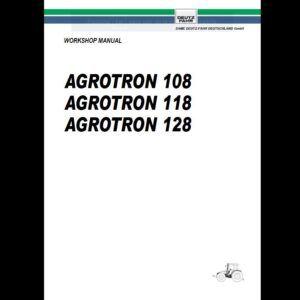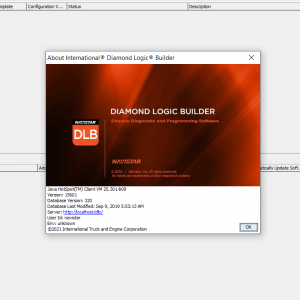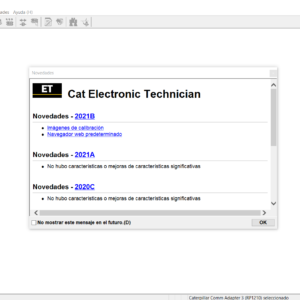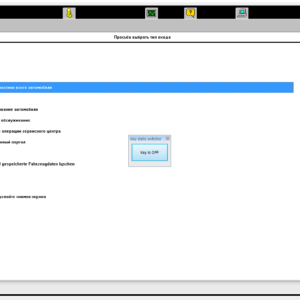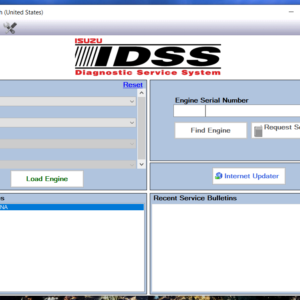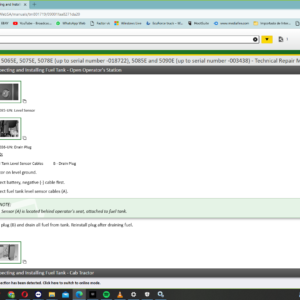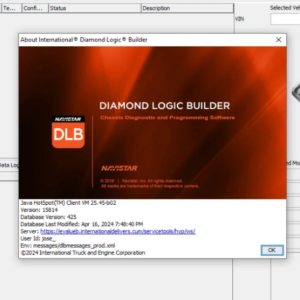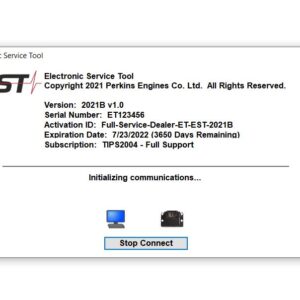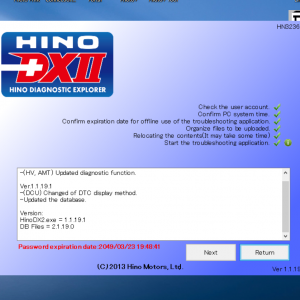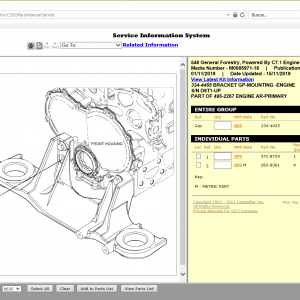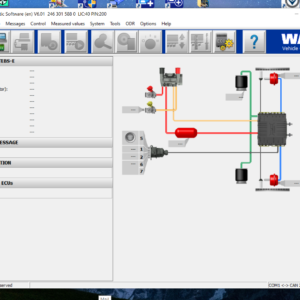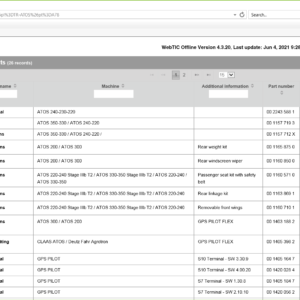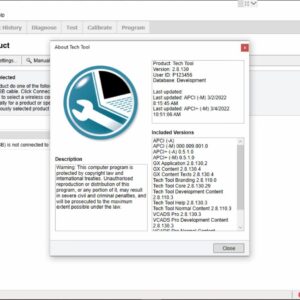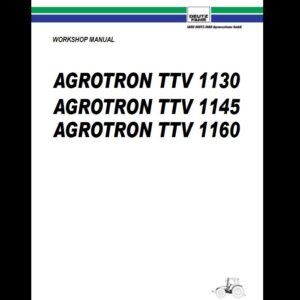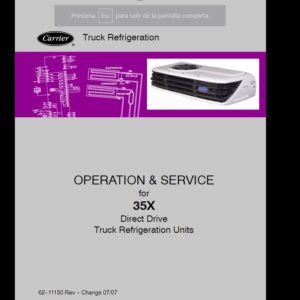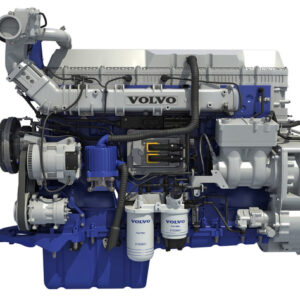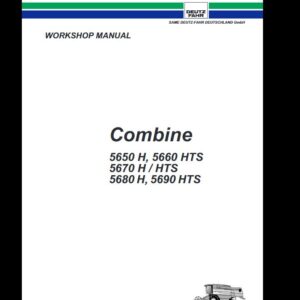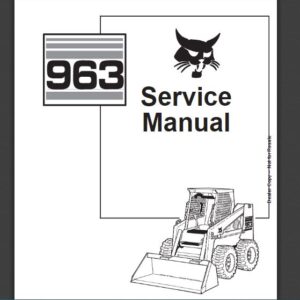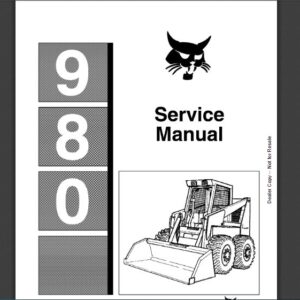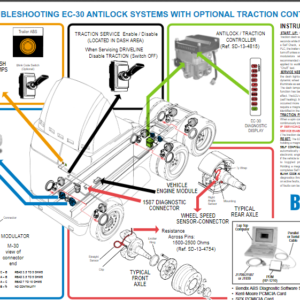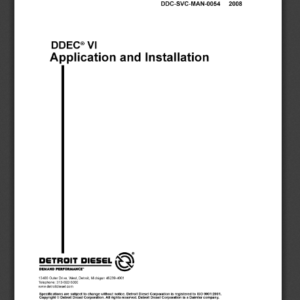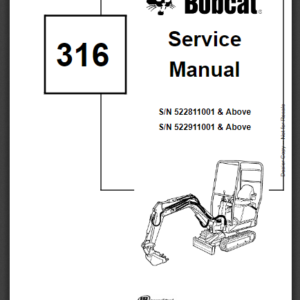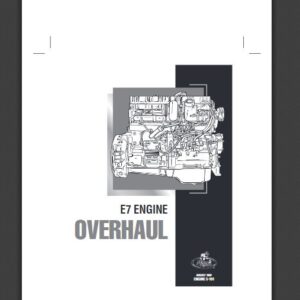Cummins X15 CM2350 X116B Performance Series (2018 & Newer) Fault Code: 2322 PID: SID 064 SPN: 723 FMI: 2 Engine Camshaft Speed/Position Sensor- Data Erratic, Intermittent, or Incorrect
Circuit Description
The engine control module (ECM) provides 5 volt supply to the engine camshaft speed/position sensor on the sensor supply circuit. The ECM also provides a ground on the sensor return circuit. The camshaft speed/position sensor provides a signal to the ECM on the camshaft speed/position sensor signal circuit. This sensor generates a signal to the ECM as the camshaft speed indicator lobe moves past the sensor. The ECM interprets this signal into an engine speed reading and determines engine position. This sensor is used as a backup sensor if the primary engine crankshaft speed/position signal is lost.
Component Location
The camshaft position sensor is located in the top of the gear housing on the exhaust side. .
Conditions for Running the Diagnostics
This diagnostic runs continuously when the engine speed is greater than 1200 RPM.
Conditions for Setting the Fault Codes
The Engine Control Module (ECM) detected an intermittent loss of the camshaft speed/position sensor signal.
Action Taken When the Fault Code is Active
The ECM logs the fault code immediately when the diagnostic runs and fails.
For On-Board Diagnostics (OBD) engines, the ECM illuminates the the Malfunction Indicator Lamp (MIL) immediately when the diagnostic runs and fails.
Exhaust Gas Recirculation (EGR) valve operation will be disabled.
Engine torque will be reduced if the engine is operated for an extended period of time with this fault active.
Conditions for Clearing the Fault Code
To validate the repair, perform a key cycle, start the engine and run it at high idle for 5 minutes.
The fault code status displayed by INSITE™ electronic service tool will change to INACTIVE immediately after the diagnostic runs and passes.
The ECM will turn off the amber CHECK ENGINE lamp immediately after the diagnostic runs and passes.
For On-Board Diagnostics (OBD) engines, the ECM will extinguish the Malfunction Indicator Lamp (MIL) after three consecutive trips where the diagnostic runs and passes.
The Reset All Faults command in INSITE™ electronic service tool can be used to clear active and inactive faults, as well as extinguish the MIL for OBD applications.
Shop Talk
During engine operation, the ECM monitors the secondary speed sensor (camshaft speed sensor) signal. Fault Code 778 will become active and light the yellow lamp if the signal from the secondary speed sensor is not present or degraded for more than 3 continuous seconds. If over a period of time the ECM detects several incidents of a loss of the secondary speed sensor signal, but the signal loss is short in duration, this fault code will become active. Since the secondary engine speed signal is not used for normal engine operation, a vehicle operator should not notice any symptoms related to this problem.
This fault code becomes active whenever the ECM detects a persistent loss of the secondary engine speed sensor signal over a short period of time.
This fault becomes inactive if the ECM does not detect a loss of the secondary engine speed sensor signal for at least 20 minutes.
Problems that can cause this fault:
Intermittent loss of primary speed sensor signal; the most likely cause is an intermittent open or short circuit that can be experienced with speed sensor connector problems
Sensor air gap that is marginally too small or too large, or target wheel exhibits excessive runout.
Actions to take if this fault is intermittent:
Look for intermittent engine harness connections in the secondary engine speed sensor circuit
Look for loose connections at the ECM connector where the pins can not be locked into the socket
Look for places where the engine harness has worn into a nearby component, causing an intermittent short circuit
Look for pin wear at the speed sensor
Inspect the target wheel for damage.
Possible Cause:
1) Sensor failure
2) ECM calibration
-
download MANCATS II v14.01 2014 Diagnostic software MAN CATS ( virtual machine )
MAN $75.00Rated 0 out of 5
-
JOHN DEERE SERVICE ADVISOR 5.3.225 DATABASE AG + CF ENGLISH 2023
John Deere $250.00Rated 0 out of 5 -
DETROIT DDDL 8.14 SP3 – Detroit Diesel Diagnostic Link 8.14 SP3 2021 ( 1PC )
Detroit $73.00Rated 0 out of 5 -
Eaton Service Ranger 4.9 Engineering 4.9 [05.2021] Engineering Level ( 1 PC )
Eaton $67.00Rated 0 out of 5 -
Hino Diagnostic eXplorer 2 – Hino DX2 1.1.19.1 with keygen unlocked ( Hino trucks )
Hino $50.00Rated 0 out of 5 -
CLAAS WebTIC Offline [11.2021] Service Information – ENGLISH Language
CLAAS $100.00Rated 0 out of 5 -
Volvo Premium Tech Tool PTT 2.8.130 Diagnostic Software 04.2022 ACPI ( 1 PC )
Trucks software $143.00Rated 0 out of 5
Related products
-
Allison 1000 & 2000 Gen 4 Fault Codes: U1000 Class 2 Loss of Serial Data Communication
1000 & 2000 Gen 4 $50.00Rated 0 out of 5 -
Allison 1000 & 2000 Gen 4 Fault Codes: P2773 Torque Control Request Ignored – ECM/TCM
1000 & 2000 Gen 4 $50.00Rated 0 out of 5 -
Allison 1000 & 2000 Gen 4 Fault Codes: P0873 Transmission Pressure Switch Solenoid E Circuit High
1000 & 2000 Gen 4 $50.00Rated 0 out of 5 -
Allison 1000 & 2000 Gen 4 Fault Codes: U0032 J1850 (Class 2) Serial Data Communication Link High
1000 & 2000 Gen 4 $50.00Rated 0 out of 5 -
Allison 1000 & 2000 Gen 4 Fault Codes: P0871 Transmission Pressure Switch Solenoid E Circuit Stuck Open
1000 & 2000 Gen 4 $50.00Rated 0 out of 5 -
Allison 1000 & 2000 Gen 4 Fault Codes: P2771 Four-Wheel Drive Switch Circuit
1000 & 2000 Gen 4 $50.00Rated 0 out of 5 -
Allison 1000 & 2000 Gen 4 Fault Codes: P0846 Transmission Pressure Switch Solenoid D Circuit Stuck Open
1000 & 2000 Gen 4 $50.00Rated 0 out of 5 -
Allison 1000 & 2000 Gen 4 Fault Codes: P0875 Transmission Reverse Pressure Switch Circuit Malfunction
1000 & 2000 Gen 4 $50.00Rated 0 out of 5 -
Allison 1000 & 2000 Gen 4 Fault Codes: U1301 J1850 (Class 2) Serial Data Communication Link Low
1000 & 2000 Gen 4 $50.00Rated 0 out of 5 -
Allison 1000 & 2000 Gen 4 Fault Codes: U0073 CAN Bus Reset Counter Overrun
1000 & 2000 Gen 4 $50.00Rated 0 out of 5 -
Allison 1000 & 2000 Gen 4 Fault Codes: P0872 Transmission Pressure Switch Solenoid E Circuit Stuck Closed
1000 & 2000 Gen 4 $50.00Rated 0 out of 5 -
Allison 1000 & 2000 Gen 4 Fault Codes: U0100 CAN Bus ECM Error
1000 & 2000 Gen 4 $50.00Rated 0 out of 5 -
Allison 1000 & 2000 Gen 4 Fault Codes: P0848 Transmission Pressure Switch Solenoid D Circuit High
1000 & 2000 Gen 4 $50.00Rated 0 out of 5 -
Allison 1000 & 2000 Gen 4 Fault Codes: P2810 Solenoid G Electrical
1000 & 2000 Gen 4 $50.00Rated 0 out of 5 -
Allison 1000 & 2000 Gen 4 Fault Codes: P0123 Pedal Position Sensor Circuit High Voltage
1000 & 2000 Gen 4 $50.00Rated 0 out of 5
-
MANUAL SERVICE Deutz Combine 5650 H, 5660 HTS5670 H / HTS5680 H, 5690 HTS
DEUTZ $38.00Rated 0 out of 5 -
SERVICE MANUAL DETROIT DIESEL DDEC VI – Application And Installation Manual
DETROIT $20.00Rated 0 out of 5

